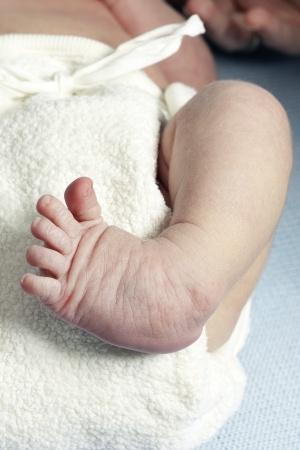When it comes to our children, their health is of utmost importance. It’s no surprise, then, that parents would be very concerned if they were born with (or develop) a foot deformity.  These include conditions that may affect the bones, tendons, and muscles of the foot or ankles. While all are not very common, most are treatable and can be almost completely corrected if treated early enough.
These include conditions that may affect the bones, tendons, and muscles of the foot or ankles. While all are not very common, most are treatable and can be almost completely corrected if treated early enough.
Parents, we’d like to make you more aware of possible foot issues that your child may encounter. The following are some of the more commonly seen pediatric foot deformities:
- Club Foot – Sometimes detected even during an ultrasound, clubfoot is immediately noticeable when the baby is born. One or both of the feet are turned inward and down. You can start treating the issue soon after birth. The recommended treatment is to use the Ponseti Method, in which weekly casting is done to set the feet in normal positioning. In some cases, additional procedures or surgeries may be required. Then, braces are used for a while to maintain proper alignment.
-
Metatarsus Adductus / Skewfoot – The deformity occurs in the middle of the foot, making the front half of the foot turn inward. Treatment depends on when the problem begins and how flexible the deformity is. For infants, stretching, manipulation, and casts may help to correct the issue. For some children, the problem can resolve itself too.
-
Flat feet – When children begin to stand on their toes and learn to walk, an arch should appear on the inner part of the midfoot. Otherwise, the feet are considered to be flat feet. Some children will not experience any pain, but others may have issues with foot or joint pain. Treatment usually involves using orthotic inserts, especially with good arch support. Surgery is not usually recommended, but in rare cases, a child may benefit from restoring tendon or ligaments or a procedure involving the midfoot bones.
-
Tarsal Coalition – When an abnormal connection develops between the bones in the midfoot and back part of the foot. It begins to limit foot movement and can cause pain and stiffness. Other foot problems may accompany tarsal coalition, which needs treatment too. Treatments usually involve corrective shoes, custom orthotic inserts, or physical therapy. In severe cases, surgery is performed to allow for pain relief
-
Juvenile Bunions – While most adults that get bunions can attribute them to narrow shoes and high heels, young girls that get bunions typically develop them due to flat feet. The growth of the big toe joint can be painful and uncomfortable, especially when they do not fit the shapes of normal footwear. Treatment includes bunion pads, straps, and orthotics, as well as wearing shoes with roomier toeboxes. If bunion surgery is required, it is recommended to wait until the foot is fully formed.
If you have concerns about your child’s foot pain or possible deformities, come see our board-certified podiatrist, Dr. Brad Toll at Crofton Podiatry. Make an appointment by calling (410) 721-4505. Our team is ready to assist you and your family at our Crofton, MD office, which also serves the surrounding Gambrills, Odenton, and Bowie areas.
